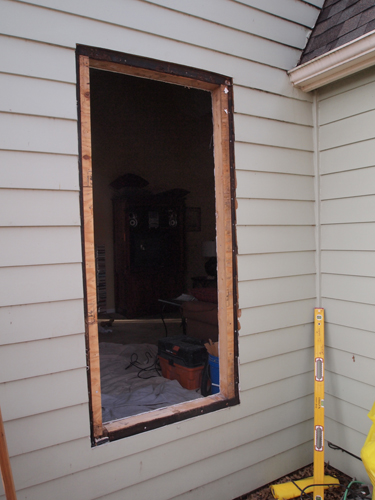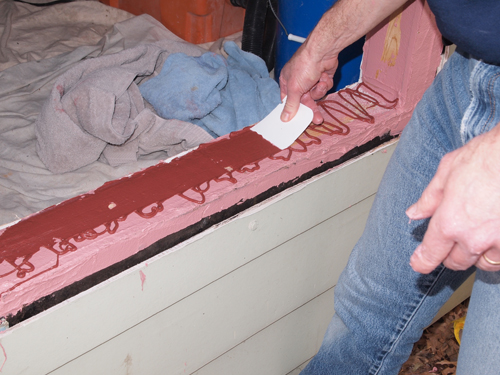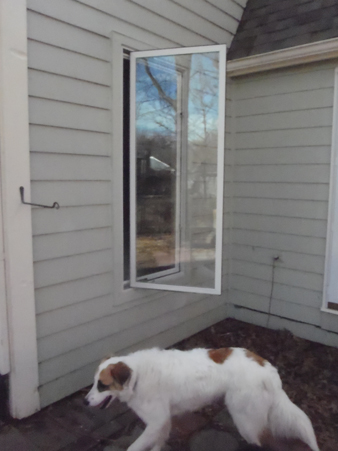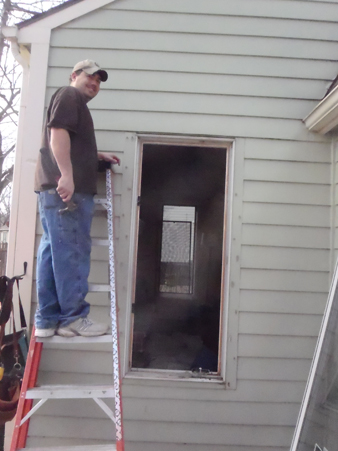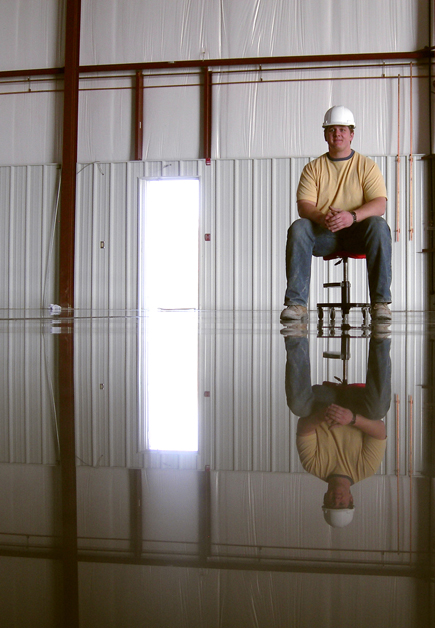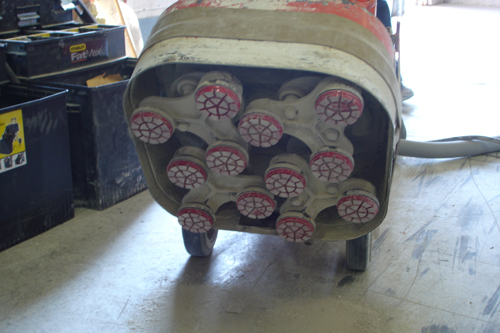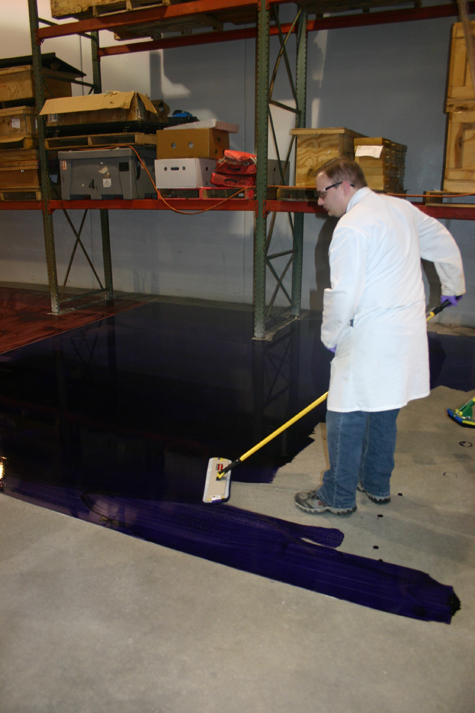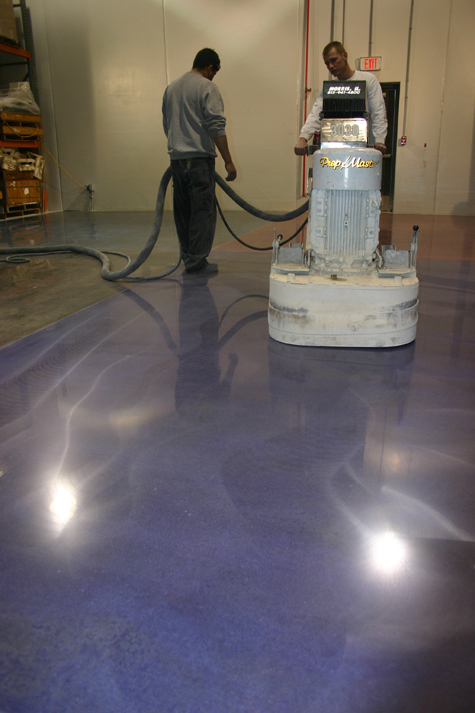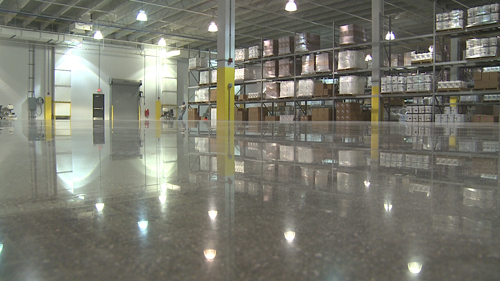
Oops -- Yours Truly winces as a gob of PROSOCO R-GUARD Joint & Seam Filler obeys gravity. I managed to get most of the fiber-reinforced fill coat and seam treatment where it was supposed to go, however.
I probably didn’t need to be nervous, but I was.
I had about an hour to use our PROSOCO R-GUARD Joint & Seam Filler, and R-GUARD FastFlash to completely seal a casement-window rough opening before the window installers got back to put in the new window.
The only problem was that I’d never used those products. Old dog, new trick, as the saying goes.
I knew this moment was coming, and not being a “handy” guy, I dreaded it — since December. That’s when, while cleaning the casement window, Karen discovered that the opening/closing mechanism was shot.
It was missing several pieces, in addition to having some corrosion.
While investigating that, I found that the wood frame was rotten from water infiltration in places. Time for a new window.
So I wrapped the uncloseable thing with plastic and duct tape.
A thousand dollars and several months later — yesterday, in fact — we finally had the new window, window installers, and the warm day suitable for window installation. I was ready with PROSOCO FastFlash products, caulk guns and knives, and product data sheets.
Also present — Stephen Falls, PROSOCO’s graphic artist and photographer; and John Young, our multimedia specialist, both there to get some stills and video of Joint & Seam Filler, FastFlash and yours truly in action.
The only problem was — while I’ve written extensively about how easy these products are to use, I’d never used them. And frankly, I didn’t want to! These things are best left to professionals imho.
In fact — and I hate to admit this — I was ready to let the window be installed using the adhesive tape that the installers normally use to flash the rough opening just because I didn’t feel confident in my abilities to become part of the installation crew.
But when I told my boss, Director of Marketing Scott Buscher, about the window situation, he was indignant.
“How can you write about these adhesive tapes and fabrics that fail and let water in, and then go and use them yourself?” he asked me. “How can you look at all the photos we have of window failures from these traditional practices and not want to do it right? How can you look at your own damaged window and be willing to let it happen all over again?”
Easy, I don’t want to look like an idiot in front of the construction guys. But I didn’t say that. I reluctantly decided I’d do it — how hard could it be? It definitely seemed like it would be harder if I didn’t.
My deal with the installers — general contractor Gary Bruhns and P.J. Hall of Prairie Wind Homes, Lawrence — was that they’d take out the old window and prepare the rough opening. It just needed to be clean and solid wood. Didn’t even have to be dry, since Joint & Seam Filler and Fast Flash work fine on damp surfaces.

General contractor Gary Bruhns, Prairie Wind Homes, works at getting the old window frame out so I can flash the rough opening.
While the crew went to buy new trim for inside and out, I’d flash the opening while being video-ed and shot by John and Stephen. I was especially glad Stephen was there. He’d used the products before on a small project at his own house. He offered some good advice, and even took a turn with the application.
I also got some good advice from Paul Grahovac, the day before. Paul is the R-GUARD product-line manager. He has hands-on experience, too.
So going in I knew a couple of useful things:
The Joint & Seam Filler doesn’t have to be completely dry before applying the FastFlash on top of it. It just needs to “skin” a little. Same thing for the FastFlash — just needs to skin a little before the window gets popped in.
Also, if they mix together a little before fully drying, no big deal, since they are completely compatible.
What I didn’t know: Even with these fast-drying products, would I have enough time before the installers got back? I needed time to fill all joints and seams in the rough opening, then let the application dry at least a little. Then I had to cover the whole thing with FastFlash, and let it dry a little.

Every seam and opening had to be filled with Joint & Seam Filler, then covered with waterproof FastFlash.
The thing I was most scared of was to be on the ladder futzing around with the stuff while the window guys impatiently twiddled their thumbs waiting for me.
As soon as Gary informed me the opening was ready, I got to work. First, I caulked the joints, nail-holes and any other opening I could find with the pink Joint & Seam Filler. I just ran a bead along the seams and used a plastic spreader to jam it in.
I needed to fill the seam between the wood frame and the inside drywall, and the seam between the frame and the outside sheathing. Also, the joint between the vertical member and the horizontal.
It was easy on the bottom horizontal part of the window. It got a bit drippy as I applied to the top. I found if I kept the nozzle pressed at an angle against the wood, I got better adhesion.
Use plenty, Stephen advised, and I did.
I smeared the Joint & Seam Filler in with the spreader as I had on the bottom. Where the spreader was too big, I used a small caulking knife.
The side pieces were easier than the top, but still had some drip issues. I struggled to try to catch drips.
“You should see Shawn Derosier (a contractor we know) put this stuff on,” Stephen said helpfully. “He does it really neatly and it takes him about a second.”
Finally, I was done. The guys were still gone. We took a break to let the Joint & Seam Filler “skin.” I’d forgotten to check my watch when I started, so I didn’t know exactly how much time I used. I was antsy and continually fingered the treated wood to see if the Joint & Seam Filler had skinned.
Finally, it seemed just dry enough. I applied the dark red FastFlash in a looping back-and-forth pattern, at Stephen’s suggestion. Then I ran the spreader over it in one smooth motion, which is how Stephen advised me that Shawn Derosier does it.
Seemed to work pretty good, though, at least on the bottom horizontal piece. Again, it was a little harder doing it upside down on the top piece of the opening. I couldn’t keep the nozzle tight against the surface either, for fear of gashing the just lightly dried Joint & Seam Filler.
Plus, my hands, more accustomed to typing than construction, were getting tired from squeezing the trigger on the caulk gun, even though I switched frequently.
I manned up, though, and got top and sides completely coated before Gary and crew returned — but only just. The FastFlash still needed a few minutes to skin, but luckily, the guys had to take some time to cut the interior trim and exterior framing they’d bought.
That included setting up a gasoline-powered generator for electricitiy, since our local utility company had chosen that day to cut the neighborhood power while they changed out a transformer.
I’m not exactly sure what Gary and crew thought as they gazed at the rough opening now thoroughly coated with the red, rubbery, waterproof FastFlash. They seemed to take it in stride, however, and proceeded with the installation.
I suddenly realized my part was done, and felt vastly relieved. Stephen and John packed up their gear and headed out. I commenced clean-up.
Almost before I knew it, the new window was in and the trim painted. In place of a broken, plastic-sheathed eyesore, we had a brand-new Energy Star-rated window. And thanks to the waterproof, yet vapor-permeable R-GUARD products on the rough opening, I won’t have to worry about replacement due to water-infiltration issues.
Karen arrived home from work, and was very pleased with the new window (better be, she picked it out). As a bonus, from my point of view, on his way out, Gary asked me about pricing for the FastFlash products.
He said it might be worthwhile to offer them as an upsell option on window installations.
I guess all my talk about how these products were designed by window replacement contractors who didn’t want to replace windows with the same products that failed to begin with paid off a little.
And Gary certainly saw how FastFlash and Joint & Seam Filler are designed for the real world in their ability to dry fast enough to not hold up production (hence the name “Fast”Flash).
So it’s all good, but the thing I’m most grateful for is that I didn’t fall off the ladder… at least while anyone was looking.
# # #
